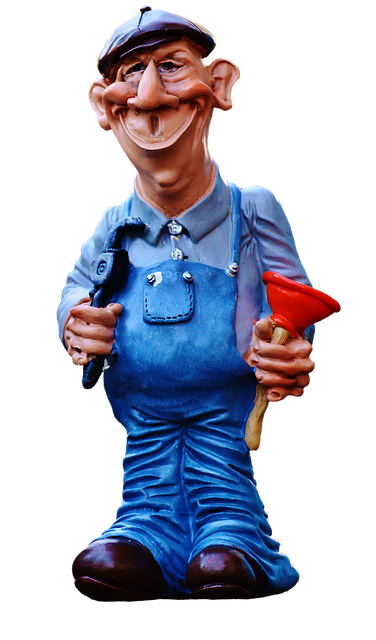A running toilet is not just an annoyance but also a significant source of water waste. Homeowners facing this issue should act promptly to address it, as persistent leaks can lead to increased water bills and water waste. The most common culprits behind a continuously running toilet are a worn-out flush valve seal or flapper, an improperly adjusted fill valve, or a damaged fill valve. These issues can often be resolved by a homeowner with basic DIY skills by inspecting, adjusting, or replacing the parts as needed. If the problem persists, it's advisable to hire a professional plumber who can diagnose and fix the issue efficiently, ensuring long-term functionality and conserving water. A plumber's expertise is invaluable for such repairs, as they can provide a lasting solution that saves money on utility bills over time. It's recommended to seek out a licensed plumber for this type of repair to prevent recurring issues and potential water waste.
Addressing a running toilet isn’t just about stopping the sound—it’s a step towards conserving water, slashing utility bills, and making eco-conscious choices. This comprehensive guide walks homeowners through diagnosing leaks, engaging professional plumbers for effective repairs, executing simple fixes, and understanding the intricacies of toilet tank components. Discover how to maintain optimal performance of your flapper and fill valve, and learn the benefits of upgrading to a high-efficiency toilet. Regular maintenance is key to preventing future issues, while also considering the cost implications of professional services versus DIY solutions. Ultimately, this article will illuminate the long-term savings and positive environmental impact that stems from resolving a running toilet.
- Identifying the Source of Toilet Leaks: A Homeowner's Guide to Pre-Plumber Diagnostics
- Professional Plumber Intervention: Effective Solutions for Repairing Running Toilets
Identifying the Source of Toilet Leaks: A Homeowner's Guide to Pre-Plumber Diagnostics

When a toilet is running, it can waste significant amounts of water and inflate your water bills. To address this issue promptly, homeowners can perform some preliminary diagnostics to identify the source of the leak before calling a plumber. The most common cause of a running toilet is often a worn-out flush valve seal or flapper, which can be easily inspected. Look for a flapper that is lifted from its seat, allowing water to trickle into the tank and continuously flow into the bowl. Another potential culprit is the fill valve, which regulates the refill of the toilet’s tank after flushing. If the water level in the tank is set too high, it can overflow into the overflow tube and appear as a running toilet. Adjusting this mechanism to the correct height can resolve the issue. Inspecting the fill valve for any damage or malfunction and ensuring the toilet’s water supply shut-off valve is functioning correctly are also part of this diagnostic process. By identifying these issues early, homeowners can save water, reduce their utility bills, and potentially avoid a costly plumber visit, as many running toilet problems can be resolved with simple tools and a basic understanding of the toilet’s inner workings. If, after your inspection, you find that the problem persists or if it seems too complex to handle alone, it is advisable to call in a professional plumber to resolve the issue.
Professional Plumber Intervention: Effective Solutions for Repairing Running Toilets

When a toilet continues to run after flushing, it’s not just an annoyance but also a significant source of water waste. Homeowners facing this issue can benefit immensely from professional plumber intervention. A licensed plumber possesses the expertise and tools necessary to accurately diagnose and remedy the problem efficiently. Common culprits behind a running toilet include faulty flush valves, worn-out or improperly adjusted floats, and defective fill valves. Plumbers can assess these components, replace parts as needed, and adjust mechanisms to ensure the toilet operates correctly, thus halting unnecessary water flow. By addressing the issue promptly with a professional’s touch, homeowners can conserve water, reduce their water bills, and maintain a well-functioning plumbing system within their residence. It’s advisable to enlist the services of a professional plumber for such repairs, as they can ensure long-term fixes and prevent future occurrences of this issue, saving homeowners both time and money in the long run.
Addressing a running toilet promptly not only conserves water, significantly reducing utility bills, but also alleviates unnecessary stress on your home’s plumbing system. Homeowners can begin by identifying the source of leaks using the guidelines provided in “Identifying the Source of Toilet Leaks: A Homeowner’s Guide to Pre-Plumber Diagnostics.” Should DIY efforts prove unsuccessful, professional plumbers, as detailed in “Professional Plumber Intervention: Effective Solutions for Repairing Running Toilets,” are adept at resolving such issues efficiently and effectively. Engaging a licensed plumber is often the best course of action to ensure long-term functionality and savings. By staying vigilant and promptly addressing running toilets, you can make a meaningful impact on your water usage and costs.
